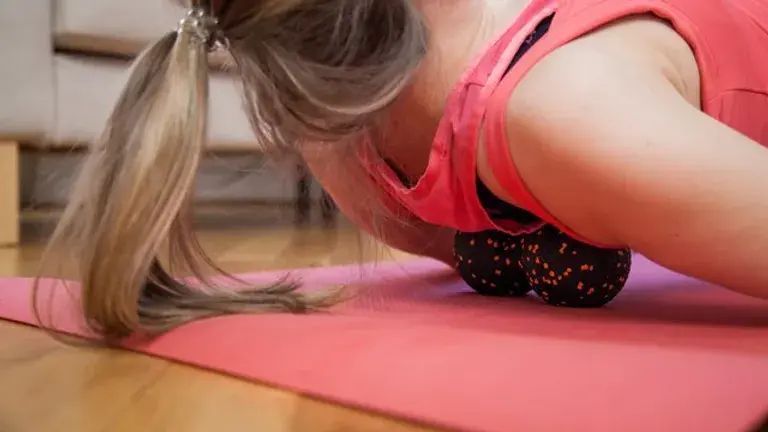
Many recreational and competitive athletes swear by the fascia roller, commonly known as the “Blackroll,” and the feel-good impact it provides. Sports medicine, on the other hand, is still grappling with the training and rehabilitation tool. Its long-term implications, in particular, have not been well researched.
Paul Reinborn sits on an exercise mat, his left leg extended. Under the calf is a black firm foam roller known as a fascia roller. The physiotherapist from Stuttgart’s Olympic base holds himself on both hands, elevates his buttocks, and carefully pulls his lower leg forwards and backwards, allowing the roller to massage his calf.
Effects of exercising with a fascia roller
The outcomes that Reinborn and others ascribe to foam roller workouts sound promising.
You may:
- Reduce stress.
- Improve mobility.
- Improve your coordination and strength.
The outcomes that Reinborn and others ascribe to foam roller workouts sound promising. You may:
reduce stress, improve mobility
Improve your coordination and strength.
The roll, which is also available from vendors other than “Black roll,” may be used from your feet to your head. Rein born would only advise against the abdominal region due to organ pressure.
What is fascia?
Fascia is a network of fibrous connective tissue that runs throughout the body. It encloses not just all muscles, but also organs and joints. Movement and stimulation are required to be healthy and avoid becoming stuck. The fascia roller is mostly used for post-sport recovery. Reinborn suggests doing it for five minutes twice or three times a week.
The author Kay Bartrow links the fascia roll’s feel-good impact and health advantages to a variety of factors. On the one hand, the pressure on the tissue stimulates blood circulation, according to the Balingen physiotherapist. The function, on the other hand, guarantees that the different layers of connective tissue shift against each other, loosening adhesions – at least in principle.
Different degrees of hardness
Fascia rollers come in a variety of hardness levels. “Actually, you only need one degree of hardness; you can control the pressure,” adds Reinborn. Wavy or knobbed rollers, on the other hand, are not employed for regeneration, according to Bartrow. On the contrary, they caused a vibration in the tissue and hence a larger depth effect, which sportsmen utilised to activate their fascia prior to competition. Small rollers and balls, in addition to large ones, are used in fascia training to massage smaller regions of the body, such as the upper arms or neck.
Professor Wilhelm Bloch of the German Sport University Cologne finds the fascia roll as beneficial as well. According to the head of the Institute for Circulatory Research and Sports Medicine, it is generally short-term. So simply maintain the increased movement for 10 or 15 minutes.
Pain Reduce
Pain, on the other hand, can be quickly eased with rollers or balls if you do not roll but instead press on the painful trigger points for an extended period of time. “The pressure stimulates the pain receptors, which then shut off,” Bloch explains.

However, he points out that the scientific understanding regarding the consequences of the fascia roll is “quite bad”. The alterations in connective tissue generated by the “black roll” are still a “black box” in terms of study.
Incorrect use can lead to varicose veins
All experts agree that you should first have a professional explain you how to use the rollers. Bloch emphasises the importance of rolling towards your body. So, when massaging your thighs, roll towards your torso.
The reason for this is that the venous valves that govern blood flow open towards the buttocks rather than the lower leg. “If you rolled towards the lower leg with pressure, the vein valves might burst over time if you continued rolling in the opposite way,” Bloch advises. This might lead to venous insufficiency, resulting in varicose veins.
The relaxation effect is best scientifically proven, says Bloch. “When pressure is applied, tension sensors in the muscles are stimulated and send feedback to the spinal cord. This then changes the tone of the muscles, which means they relax.”
Disclaimer:
The information in no way replaces professional advice or treatment by trained and recognized doctors. The content of fitmodell cannot and must not be used to independently make diagnoses or start treatments.
